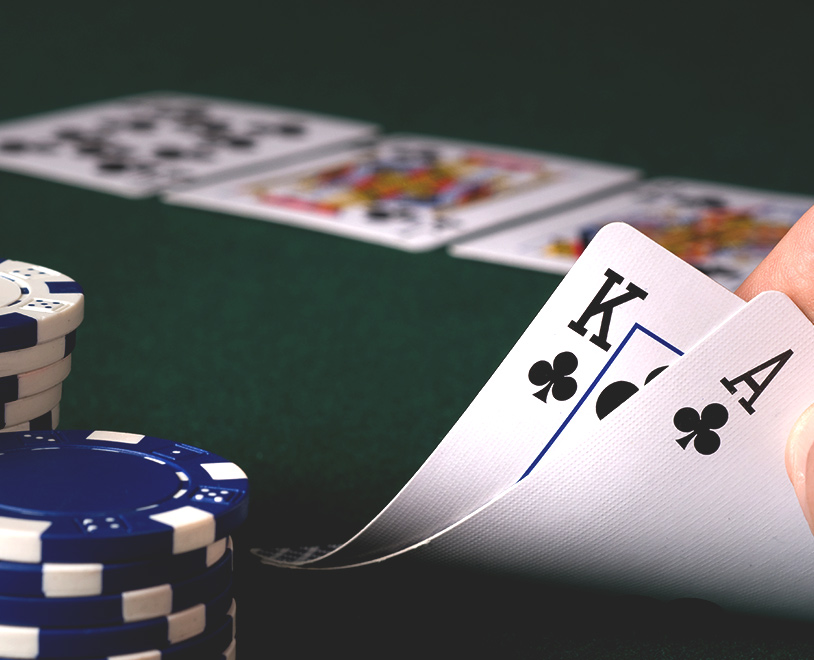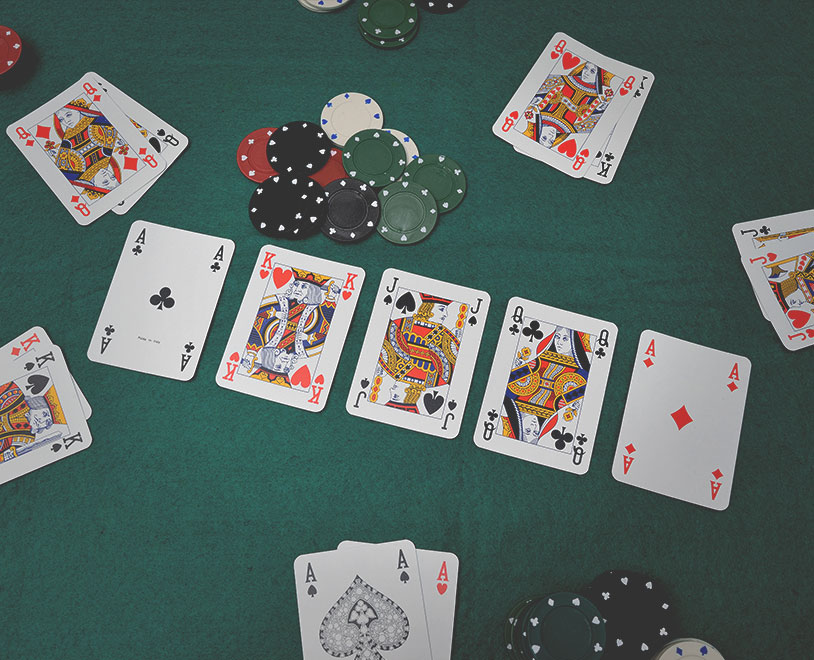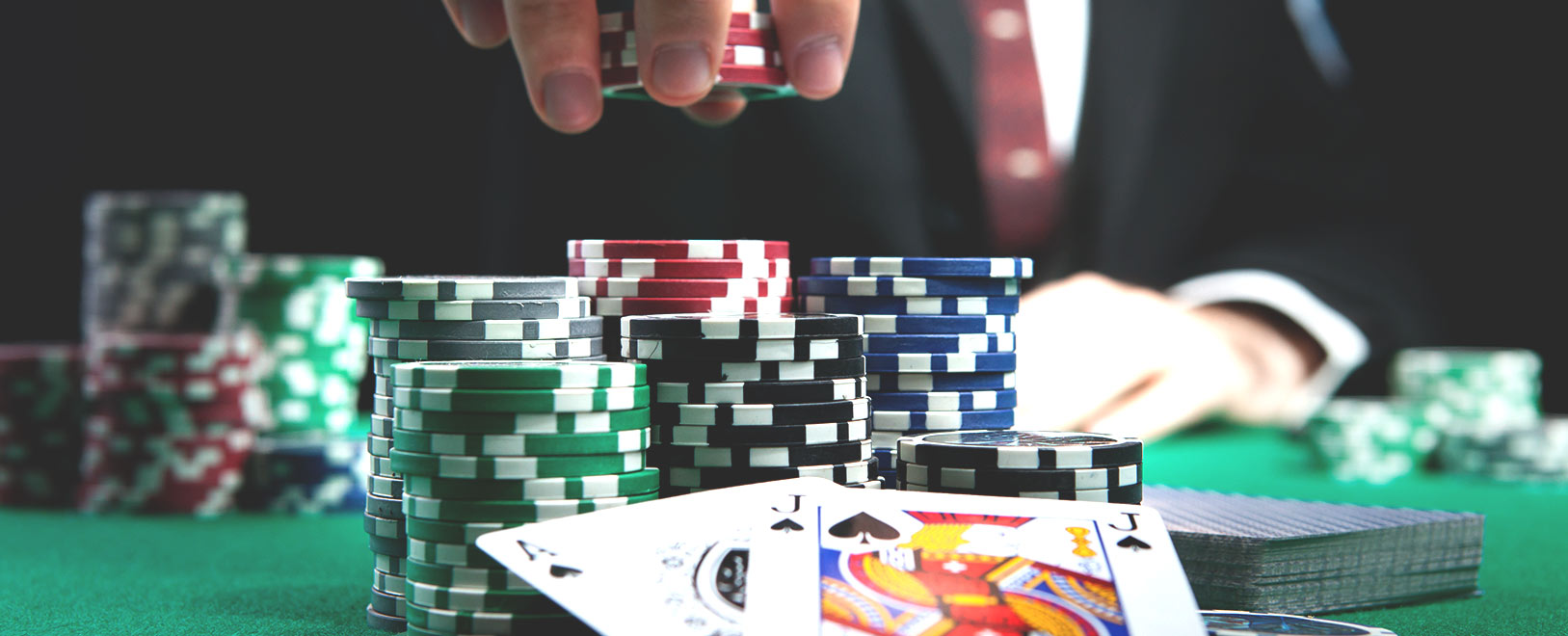What if there were a strategy that guaranteed you would never lose at online poker? There is – kind of. You’ve probably heard about game theory; poker strategy was the inspiration behind this concept when it was developed in the 1940s, and all these years later, game theory is being used to great effect at the poker tables. It’s also being mis-used by people who don’t quite get the concept. We’re going to clear up some of this confusion by showing you how to win online poker with game theory. We’ll keep it simple here; once you understand the basic idea, you can take the ball and run with it. How far you go is up to you. Let’s start by introducing one of the most important poker players of all-time, although you won’t find him in any Poker Hall of Fame.

What Is Game Theory?
During World War II, the United States led an international effort to build the world’s first nuclear weapons. This effort was called the Manhattan Project, and one of the scientists involved was a Hungarian-American math whiz by the name of John von Neumann.
Von Neumann did a lot of other things, too. Game theory, as we know it today, can be traced back to the work von Neumann did at the University of Berlin in the late 1920s, before the Nazis came to power. He became a US citizen in 1937 and continued his work, writing the groundbreaking 1944 book Theory of Games and Economic Behavior alongside economist Oskar Morgenstern. This book was like Moneyball on steroids. It showed how smarter decisions could be made in game-like situations; von Neumann’s theories have since been applied to everything from business to biology.
And it might not have happened without poker. Von Neumann developed his theories by studying simplified poker games and building up from there. These games are called “toy games” nowadays. With a little math and some reasoning, von Neumann found an optimal strategy for his toy game – neither of the two players involved could improve on that strategy.
Here’s how von Neumann’s poker game works in a nutshell. Player 1 and Player 2 each ante in $1 and receive a single card. Player 1 can either bet or check; if they check, the hand goes to showdown, and whoever has the higher card wins. If they bet, Player 2 can either call or fold. Those are the only options.
As von Neumann proved, Player 1 should bet with either a good card or a bad card, and check the stuff in between; the bigger the bet, the fewer hands they should check. If they bet, Player 2 should only call if their card is good enough; the larger Player 1 bets, the stronger Player 2’s card has to be to call. Sound familiar? This is the basis for modern No-Limit Hold’em strategies, even if that particular game has a lot more decisions to make than in von Neumann’s toy game.

How to Use Game Theory in Poker
This is where a lot of would-be poker wizards get tripped up. Applying von Neumann’s principles to beat a simplified toy game is one thing; figuring out how to use game theory to win online poker riches isn’t as simple. The more complex the game, and the more variables and decision points you throw in, the harder it is to find an optimal strategy.
Good thing we have computers. In 2015, students at the University of Alberta used von Neumann’s ideas and raw number-crunching power to produce a “game-theory optimal” strategy for heads-up Limit Hold’em. It isn’t a perfectly optimal strategy, but it’s so close that there’s no point arguing over it; the most you could ever hope to win against the U of A poker bot (named Cepheus, after a figure in Greek mythology) in the long run is less than one big blind per 1,000 hands.
The next mountain to climb was heads-up No-Limit Hold’em. Researchers at Carnegie Mellon University in Pittsburgh unveiled Claudico (literally “I limp” in Latin) in 2015 and had it play four top human poker pros, including Doug Polk. This time, Claudico had the power to adapt to the other players and their strategies; the humans won this competition, but CMU came back with the Libratus (Latin for “balanced”) poker bot in 2017, and it absolutely destroyed the human players.
Being able to adjust to other players is the key here – and it’s something that a lot of otherwise smart players still have trouble wrapping their heads around. When you play Cepheus heads-up, the bot is using math to figure out when to bet, and mixing in an optimal ratio of value bets and bluffs to keep you on your toes. It won’t change its strategy if you happen to be extra-aggressive or extra-cautious. To some people, this is what game-theory optimal (GTO) poker is all about.
But this is why game theory might fail you when applied improperly: Instead of just playing like Cepheus and taking whatever your opponents give you, an ideal strategy is maximally exploitative, meaning you’ve done all you can possibly do to win. If two ultra-exploitative players square off at the poker table, they’ll throw everything they can at each other, adjust, and eventually wind up playing something close to the same, un-improvable GTO strategy. Libratus adjusts more quickly and more accurately than any human ever could, but if you want to be a poker end boss, you should follow the same path as our robot overlords: Exploit, then adjust.

When to Use Game Theory
That doesn’t mean you can’t use a pre-determined GTO strategy in certain situations. If you happen to find yourself at the table with a really good player who’s already close to GTO – or against a non-adjusting poker bot like Cepheus – you can’t do any better yourself than responding with your own GTO strategy. You’ll never be able to memorize what to do in every single spot, but you can use the latest wave of solvers to study what the right GTO plays would be in certain situations, and make similar moves when similar situations come up.
You can also use GTO as a baseline for exploiting other players. It’s easy enough to label your opponents as too tight or too loose, but how much is too much? Think of their play in relative terms to GTO; if they fold more often than GTO would suggest in a certain spot, you can exploit them by bluffing with hands that you might otherwise fold against a balanced player, and checking with more hands that you might otherwise bet. The more your opponent folds, the further away from the GTO margins you can get with your bluffing and checking decisions.
Lots of players fold too often, but you’ll also run into players who call too much, especially on the river in lower stakes. If you’re up against one of these calling stations, do the exact opposite of what you’d do against over-folders: Bluff less often than GTO would recommend, and bet more of those marginal hands instead of checking. Again, the more they call, the more you can exploit them by moving away from GTO.
What if your opponent is a heavy bluffer? Same concept applies: The more excessively they bluff, the more often you should call with hands you might otherwise fold. Conversely, if your opponent is too tight and doesn’t bet for thin value as often as GTO would suggest, you should call less often when they do bet. By profiling your opponents as accurately as possible, you’ll be able to measure how exploitable they are, and how far away from GTO you should move in response.
Everything we’ve discussed so far can be applied at a general level, whether you’re playing online poker cash games or poker tournaments, Hold’em or Omaha. Again, it takes time and effort to learn what a GTO strategy would be for any one hand, and this approach is most useful when it’s just you versus a single opponent – multi-way pots add another layer of complexity that hasn’t been cracked yet.
Fortunately, there are some spots where the GTO strategy is much easier to compute. If you’re heads-up in a tournament with 16 big blinds or fewer, you can use Nash push-fold ranges, named after one of von Neumann’s contemporaries, John Nash – the guy from A Beautiful Mind. You can find these push-fold ranges on the internet; they’ll tell you to either shove your stack in the middle or fold, depending on your cards and how many big blinds you have. It might not be the very best play you can make at the time, but it’s guaranteed to be unexploitable.
There’s so much more to talk about when it comes to game theory, but you should work on these fundamental concepts first, before you go any further. Now that you know what game theory is, where it came from and why it works at the table, download our poker software if you haven’t already, play a low-stakes game or two, and see how these ideas change the way you look at poker. You might already be several steps closer to achieving end-boss status.
